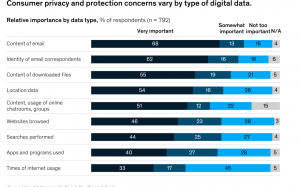Many organizations don’t put strategy at the center of their management process.
These organizations tend to think of strategy as a once-a-year off-site where the leadership team dreams big and thinks of new, interesting ideas…before they go back to their normal scheduled centered around daily or weekly operations.
Does this sound familiar?
If so, strategy is likely thought of as an abstract concept rather than an integral part of your organization. In other words, strategy is considered critical, in a conceptual way, but employees don’t understand how to interact with it on a daily basis.
Breaking this cycle is a challenge—but it’s not insurmountable. Below are three recommendations to help you avoid strategy implementation issues and get started successfully:
1. Get real executive buy-in.
You don’t just need buy-in from an executive—you need it from the executive: your director, CEO, partner, etc. Before you brush off this step and think, “My CEO is bought in; we’re good,” you should measure the level of buy-in against the two scenarios below:
- Fake buy-in happens when your CEO states that strategy execution is important to them and takes a step in the right direction (like drafting a company-wide memo regarding its importance), but immediately abandons a strategy meeting if something more important comes up. Or, he/she consistently wants to use strategy meeting time to discuss something else.
- Real buy-in happens when the CEO demands that key individuals are present at strategy meetings; helps to drive the discussion around strategy; and acknowledges the long-term, ongoing importance of strategy. These CEOs are in it for the long haul.
If you realize that your CEO isn’t really bought in, you do have options. One is to tie strategy implementation practices to executive team bonuses in “year one.” This way, the executive team knows what they’re signing up for and will be committed to making the new strategy execution process a reality.
Additionally, be sure to fully explain to the CEO the tangible benefits they’ll see from strategy implementation. For example, they’ll be able to delegate more lower-level decisions, and they’ll have the right people in the room for more important cross-functional strategic decisions. This will free up their time by preventing them from having to attend unnecessary meetings. As Susan Ashford and James Detert stated in their Harvard Business Review article Get the Boss to Buy In, “Once people see how your initiative fits into the big picture, they’ll be more willing to devote resources to it.”
2. Create some quick wins.
Once your CEO has fully committed to your strategy, they’re likely to monitor the strategy more closely to ensure its success. To get off on the right foot, I suggest you create a few “quick wins” for Team Strategy:
- Link your current projects to your strategy. Look at your current ongoing projects to see which are closely related to your strategy. Highlight those projects at your next strategy review meeting and highlight the individuals working on them. This practice accomplishes two things: You’re able to create an immediate link between your strategy and some important projects, and you’re able to highlight those who have been working on that project (which helps gain their buy-in as well).
- Focus on leading indicators. Leading indicators can be thought of as drivers, and lagging indicators can be thought of as outcomes. It’s easy to fixate on lagging indicators, but over time, leading indicators will help you drive better overall results. So celebrate the change in one of your manufacturing processes or the hiring of people with new skills that link directly to your strategy. You can use these small wins to show a direct link to and focus on your strategic execution.
3. Change the agendas in your management meetings to focus time on strategy.
You’re in a strategy management meeting, and an IT director wants to discuss overhauling an IT program. Someone from marketing needs to talk about a marketing process they’re experimenting with. A finance executive insists you add time to the meeting to discuss your bond rating or debt leverage.
We’ve seen this scenario play out in virtually every leadership meeting we’ve observed over the years. And while these discussions may be important, they may not actually link to your strategy—or they may be better suited for a different meeting.
The hour when you have your top 10 executives in a room is the most expensive hour you spend as an organization. Therefore, it must be focused on the topics that are most important to your company—which should be outlined in your strategy.
By refocusing these meeting agendas to line up with your strategic goals and projects, you’re far more likely to execute.
These three steps are about commitment—but strategy execution doesn’t stop there.
Once strategy is front and center on your company’s agenda, you can begin managing it more successfully. That means building more effective management reports, ensuring you have the right strategy execution team in place, following a regular strategy meeting calendar, refreshing your strategy regularly, and more.
Business & Finance Articles on Business 2 Community
(39)
Report Post





